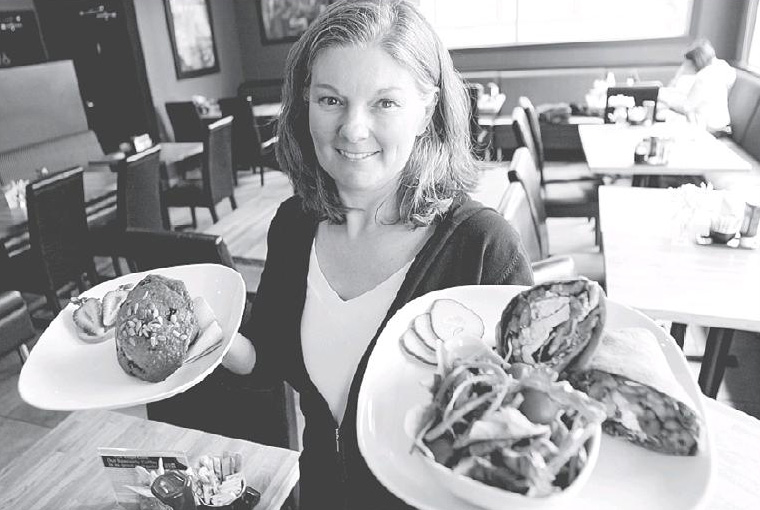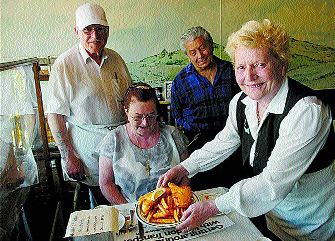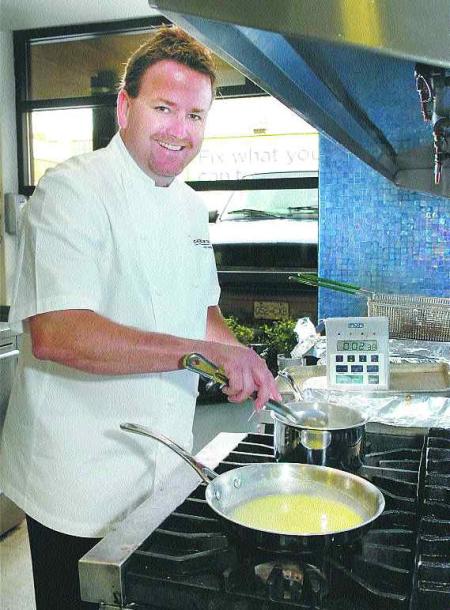Kevin McCoy
USA Today

Eunice Anderson went through Chapter 13 to catch up on her debts only to have her lender tell her she owed more than $10,000 in late payments and fees.

Handyman Michael Dillon won a New Hampshire state court ruling that Fairbanks Capital improperly tried to foreclose on his home in Manchester, N.H.
Beset by financial problems in 2002, Eunice Anderson fell months behind in the mortgage payments on her four-bedroom ranch in Redford Township, Mich., near Detroit.
Anderson, 48, a medical insurance auditor, says she was unable to refinance or negotiate a relief plan with her lender, Countrywide Financial. Facing foreclosure, she filed a Chapter 13 bankruptcy petition that let her keep her home while she paid more than $11,000 in debt.
She emerged from bankruptcy three years later with a court-filed certification that she had paid in full. But weeks later, Countrywide notified Anderson she still owed more than $10,000 in late payments and other fees, and threatened to foreclose.
“I thought when I came out of bankruptcy, I was paid up and current,” says Anderson, who felt her only option was to seek bankruptcy protection for a second time. “I think it’s kind of unfair.”
She’s now a plaintiff in a federal lawsuit that seeks class-action status and alleges that Countrywide, the nation’s largest home lender, disregarded bankruptcy-court rules by billing for unwarranted fees.
The case, being fought amid what the Mortgage Bankers Association says is the highest level of foreclosures since 1979, is among scores of lawsuits accusing the lightly regulated companies that collect mortgage payments of violating borrowers’ rights, a USA TODAY review of court and government records shows.
The lawsuits typically include allegations that mortgage-servicing firms mishandle borrower payments, triggering unwarranted late charges or defaults; bill homeowners for more than they owe; charge for unneeded and expensive property insurance; and disregard bankruptcy-court rules.
Countrywide, whose shareholders on Wednesday approved an expected July takeover by Bank of America, is a prominent defendant in some of the litigation. The attorneys general of Illinois and California sued the company Wednesday for alleged deceptive practices, including mortgage-servicing abuses. But cases across the nation also focus on other mortgage-servicing firms, including some owned by major investment banks.
“We see huge numbers of problems with this industry,” says Tara Twomey, an attorney for the National Consumer Law Center, which represents low-income clients.
Countrywide and other mortgage servicers reject any notion that their practices have been improper. “Reports alleging that mortgage servicers are systematically charging excessive fees and using the bankruptcy process to push borrowers into foreclosure, or abusing the process more generally, are inaccurate,” Steve Bailey, Countrywide’s loan administration chief, wrote in testimony submitted at a May congressional hearing.
But homeowners nationwide say the firms have violated housing laws, bankruptcy rules or both:
•In a Pennsylvania bankruptcy case similar to Anderson‘s, Judge Thomas Agresti in May dismissed a proposed settlement of a case that included allegations Countrywide used fabricated letters in its bid to foreclose on the home of Sharon Hill in Monroeville, Pa. The letters contained purported notifications of increases in Hill’s mortgage payments during the bankruptcy process. But Countrywide never sent them to Hill, court records show. They were “misrepresented as bona fide payment-change letters,” a bankruptcy trustee alleged in a June 9 court filing.
Agresti called that a sign “something is not right in Denmark.”
•In New Hampshire, Michael Dillon, a handyman and former freelance stage technician, won a 2005 state court decision upholding his allegations that Fairbanks Capital improperly tried to foreclose on his Manchester home.
Judge Gillian Abramson issued a contempt ruling after concluding Fairbanks had “created a predatory scheme of penalties,” in part by billing him for fees for which Dillon “did not receive any notice.” The ruling ordered the firm to give Dillon a chance to reinstate the mortgage “without penalties.” The litigation is continuing.
•In Louisiana, a bankruptcy-court review of accounting by Wells Fargo Home Mortgage found the firm’s servicing arm collected nearly $25,000 more from Michael Jones than he owed on his Mandeville home. Judge Elizabeth Magner ordered a refund and told Wells Fargo to pay more than $67,000 in sanctions and damages. The firm has appealed.
•And in Illinois, a lawsuit that consolidated 18 cases from 10 states accuses Ocwen Financial of engaging in a “nationwide scheme of illegal, unfair, unlawful and deceptive business practices” involving improper fees, costs and other charges. The case is in settlement negotiations, court records show.
Separately, EMC Mortgage and its former parent, Bear Stearns, notified investors in March that the Federal Trade Commission staff believes the firms “have violated certain federal consumer protection statutes” with their mortgage-servicing practices. JPMorgan Chase (JPM) acquired the servicing firm in May with its purchase of Bear Stearns. EMC said it expects negotiations to avoid a federal lawsuit.
This month, the firm also agreed to settle a federal lawsuit filed by Excel and Annie Ward, said Kenneth Mayfield, the lawyer for the Mississippi homeowners. They accused EMC of failing to refund more than $4,100 they were owed from an insurance settlement.
Along with the EMC investigation, the FTC is assessing whether other mortgage servicers and lenders “are making deceptive claims,” agency Chairman William Kovacic wrote in a June 4 letter to Sen. Chuck Schumer, D-N.Y.
‘Abuse’ of bankruptcy process
The FTC action comes five years after it reached a $40 million settlement with Fairbanks Capital to resolve allegations the company failed to post borrowers’ mortgage payments on time, charged unauthorized fees and used dishonest or abusive debt-collection practices.
Fairbanks subsequently changed its name to Select Portfolio Servicing. The renamed company, now owned by Credit Suisse, has been the subject of similar complaints to the FTC since the settlement.
The Executive Office for U.S. Trustees, the Justice Department agency that oversees bankruptcy cases, has intervened or filed actions in 16 cases involving Countrywide, GMAC Mortgage Loans, NovaStar Mortgage or Washington Mutual Bank. The cases were filed in eight states.
Similar action could come in more than 30 other cases, agency director Clifford White said at the congressional hearing.
He said most of the cases involve people who fell behind on their mortgages and filed for Chapter 13 bankruptcy protection, a process designed to help debtors repay what they owe over months or years.
“Countrywide’s failure to ensure the accuracy of its claims and pleadings has resulted in an abuse of the bankruptcy process,” U.S. Trustee Donald Walton alleged in a Georgia bankruptcy-court complaint filed in February.
The action accuses the firm of “engaging in bad faith conduct” in the bankruptcy of John and Robin Atchley by accepting payments made on the couple’s behalf even though they “had already paid Countrywide’s claim in full.” The complaint said Countrywide’s alleged actions were “not an isolated incident.” The firm moved to dismiss the case in May.
In a similar conclusion, a November research study by Katherine Porter, a University of Iowa law professor, found mortgage and servicing companies “frequently do not comply with applicable law.”
Fees charged to borrowers “are often poorly identified, making it impossible to verify if such charges are legally permissible or accurate,” concluded the report, which analyzed 1,700 recent Chapter 13 bankruptcy cases. Struggling homeowners who have avoided bankruptcy may have it worse, Porter concluded, because they lack bankruptcy-court safeguards.
“I am also concerned that … the practices of these companies may not be limited to bankruptcy cases,” said Sen. Russell Feingold, D-Wis., at the May hearing.
Incentives to overcharge?
A generation ago, home buyers often got a mortgage from a local bank, which serviced the mortgage by sending monthly statements, collecting payments and assessing penalties for late or missed payments.
Today, however, home borrowers may get mortgages through a bank, a mortgage corporation, a mortgage broker or a financial institution. The original lender frequently sells the loan. And mortgages often are packaged into Wall Street securities backed by the income from borrower repayments.
The mortgage-servicing function also has changed. Servicing companies, some owned by mortgage firms or investment banks, handle the monthly notices, collections and late-fee assessments and other penalties. They also manage foreclosures when borrowers default.
Mortgage servicers typically receive fees ranging from 0.25% to 1.375% of the note’s principal for each loan, Porter found. The servicers also keep part or all of late charges and other default fees, her analysis showed.
That gives mortgage servicers “a financial incentive to impose additional fees on consumers,” a process that could result in foreclosures, Porter concluded.
Countrywide President David Sambol stressed the importance of servicing fees in the company’s third-quarter earnings conference call last year.
Referring to the increased operating costs caused by mortgage delinquencies, Sambol said those expenses “tend to be fully offset by increases in ancillary income in our servicing operation, greater fee income from items like late charges” and from “our businesses involved in foreclosure trustee and default title services and property inspection services.”
As Sambol addressed Wall Street analysts, Countrywide reported $764 million in operating earnings from mortgage servicing, up from $518 million for the third quarter in 2006. The earnings have since declined amid lower interest rates and faster mortgage prepayments, Countrywide says.
Borrower grievances about mortgage servicing account for about one-third of all mortgage-related complaints received by the U.S. Department of Housing and Urban Development. HUD has received more than 1,000 mortgage-servicing complaints during the last five years.
FTC records contain similar consumer complaints about alleged abuses.
For example, a November 2006 complaint states Select Portfolio Servicing notified one homeowner she was four payments behind, an allegation the woman, whose name was redacted from the complaint, said was untrue.
She also alleged in the FTC complaint that the servicing company placed insurance on her property “when she had insurance already.”
Some recent court rulings have sided with homeowners who accused servicers of abuses.
In a March 5 opinion, Bankruptcy Court Judge Jeff Bohm criticized Countrywide and a law firm representing the mortgage giant for filing a motion that misrepresented the payment history of Texas homeowner William Parsley. Responding to court questions about the error, Countrywide’s lawyers withdrew the motion. But the firm gave no assurance Parsley wouldn’t be billed for related legal costs, court records show.
“What kind of culture promotes payment histories that are so confusing to the vast majority of persons, including attorneys and judges — not to mention borrowers — that it becomes necessary for legal assistants to ‘simplify’ them, leading to more errors and confusion?” Bohm asked.
The judge urged Countrywide to “re-evaluate its policies and procedures” to ensure that it doesn’t “undermine the integrity of the bankruptcy-court system.”
‘My last resort’
The ruling addressed the same issue raised by Eunice Anderson.
She bought her home in 1999 for $129,000, put 5% of the purchase price down and got a Countrywide mortgage for the balance. Her monthly payment, including taxes and insurance, totaled $1,205, Anderson says.
Her grandmother’s death and unexpected family expenses landed her in financial trouble in 2002. Unable to work out a solution with Countrywide, Anderson filed a Chapter 13 petition.
“Bankruptcy was my last resort. I was pretty stressed out,” she says.
Through the court, she worked out a financial plan expected to cover the missed payments and penalties she owed Countrywide while simultaneously paying current mortgage bills.
The court confirmed the plan in January 2003. And, in January 2006, the bankruptcy trustee reported that Anderson had paid more than $11,700 in pre-bankruptcy mortgage and related debt and $46,287 for mortgage bills after the bankruptcy petition.
Anderson was discharged from bankruptcy in April 2006. Soon afterward, Countrywide notified her she still owed nearly $11,743 in mortgage payments, escrow bills and other fees, court records show.
Anderson‘s attorneys allege in court filings that Countrywide misapplied payments she made during the bankruptcy proceeding and assessed “fictitious charges” not included in the repayment plan approved by the court.
Countrywide, in a June 3 court filing, said the loan charges challenged by Anderson were included in the claim the company submitted in her bankruptcy case. The company argued that because she did not challenge the charges during the bankruptcy court’s confirmation proceedings, her claim should be dismissed.
In a similar case in Kansas involving EverHome Mortgage, Bankruptcy Court Judge Robert Berger ruled in May that the company violated the rights of borrowers Willie and Valerie Payne by not advising them of nearly $13,000 in costs and fees that allegedly accumulated during a bankruptcy proceeding. He ordered EverHome to pay $2,500 in punitive damages.
“When a lender silently accepts payments for over three years without notifying the borrower the payments are insufficient, when the borrower believes his taxes and insurance are being paid by his monthly payments to his lender, and when the borrower has no reason to know the lender is advancing taxes and insurance and thereby increasing borrower’s indebtedness, the lender waives his right to recover the advances from the borrower,” Berger wrote.
EverHome appealed the ruling, arguing that it was “contrary to the totality of evidence.”
Berger denied the appeal on June 6.
Anderson hopes for a similar outcome in her battle.
“The only thing I look forward to is coming out of the bankruptcy and not being faced with another nightmare,” she says. “It’s frustrating, but I work through it.”
|
THE USA‘S LARGEST MORTGAGE-SERVICING COMPANIES |
|
|
Company
|
Mortgages serviced1
(in billions)
|
% change from 2006 to 2007
|
Market share
|
|
|
|
Countrywide Financial
|
$1,476.2
|
14%
|
16.0%
|
|
|
|
Wells Fargo
|
$1,473.2
|
10%
|
16.0%
|
|
|
|
CitiMortgage
|
$799.8
|
53%
|
8.7%
|
|
|
|
Chase Home Finance
|
$775.9
|
15%
|
8.4%
|
|
|
|
Washington Mutual
|
$623.4
|
-12%
|
6.8%
|
|
|
|
Bank of America
|
$516.9
|
23%
|
5.6%
|
|
|
|
Residential Capital (GMAC)
|
$453.3
|
-3%
|
4.9%
|
|
|
|
IndyMac Bancorp
|
$198.2
|
27%
|
2.2%
|
|
|
|
Wachovia
|
$193.1
|
10%
|
2.1%
|
|
|
|
National City Mortgage
|
$187.5
|
10%
|
2.0%
|
|
|
|
PHH Mortgage
|
$163.1
|
2%
|
1.8%
|
|
|
|
SunTrust Mortgage
|
$149.9
|
15%
|
1.6%
|
|
|
|
U.S. Bank Home Mortgage
|
$117.5
|
18%
|
1.3%
|
|
|
|
Aurora Loan Services
|
$114.0
|
23%
|
1.2%
|
|
|
|
First Horizon Home Loans
|
$111.3
|
9%
|
1.2%
|
|
|
|
EMC Mortgage
|
$89.1
|
24%
|
1.0%
|
|
|
|
Dovenmuehle Mortgage2
|
$70.5
|
7%
|
0.8%
|
|
|
|
HSBC Mortgage
|
$66.3
|
2%
|
0.7%
|
|
|
|
Branch Banking & Trust (BB&T)
|
$65.6
|
10%
|
0.7%
|
|
|
|
Morgan Stanley
|
$65.0
|
42%
|
0.7%
|
|
|
|
Note: Includes subservicing contracts; 1 — as of Dec. 31; 2 — estimate
|
|
|
|
|
|
Source: National Mortgage News
|









